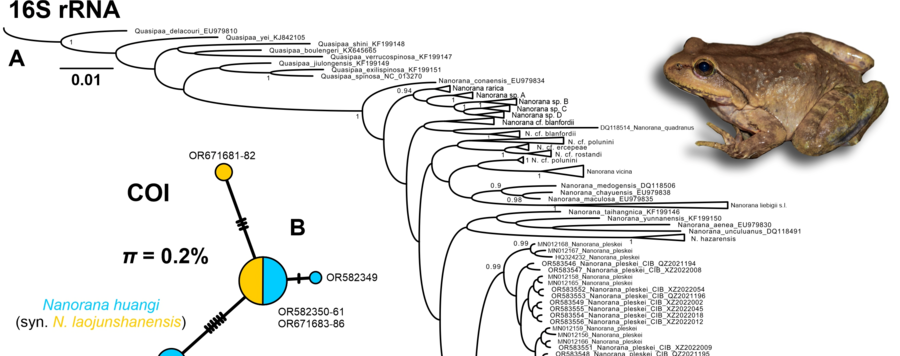
Over-splitting and inconsistently applied criteria: a response to recent changes on the taxonomy of mountain spiny frogs (Dicroglossidae, Nanorana)
Amphibians face global threats, and their conservation necessitates accurate and coherent classification. Last year, Southeast Asian spiny frogs (Nanorana) were the focus of a surge of new species descriptions and taxonomic revisions, despite little new evidence. In this article, we re-evaluate available genetic data and discuss flaws in the interpretation of results reused to justify recent taxonomic changes. In conclusion, we call for caution regarding the status of newly proposed taxa. We highlight mostly that 1) two taxa described in 2023, N. huangi and N. laojunshanensis are genetically similar and probably represent the same species, 2) inconsistent phylogenetic lineage evaluation of several species (Allopaa hazarensis, Odorana arunachalensis, Nanorana minica) led to premature supraspecific reclassifications, and 3) the elevation of N. minica as a separate subgenus (Minipaa) lacks evidence and potentially contributes to supraspecific artificial axonomic inflation. Moreover, our re-analysis of 16S sequences available on GenBank suggests that the recently described N. bangdaensis consists of phylogeographic variation of N. parkeri. These cases stress the need for informative data for accurate species delimitation in amphibian systematics, particularly in
morphologically similar species like Nanorana frogs. Caution when proposing taxonomic changes, comprehensive literature crossreferencing, and integrative approaches are essential for precise
taxonomic conclusions and informed conservation.






